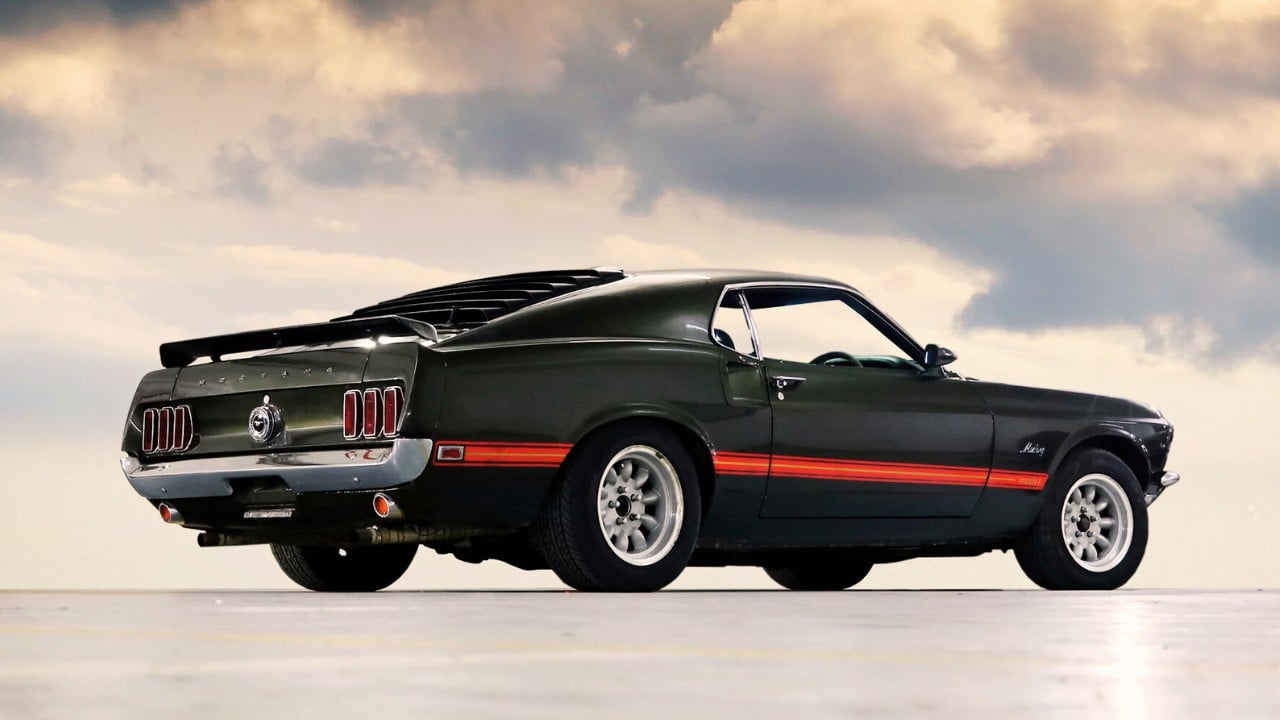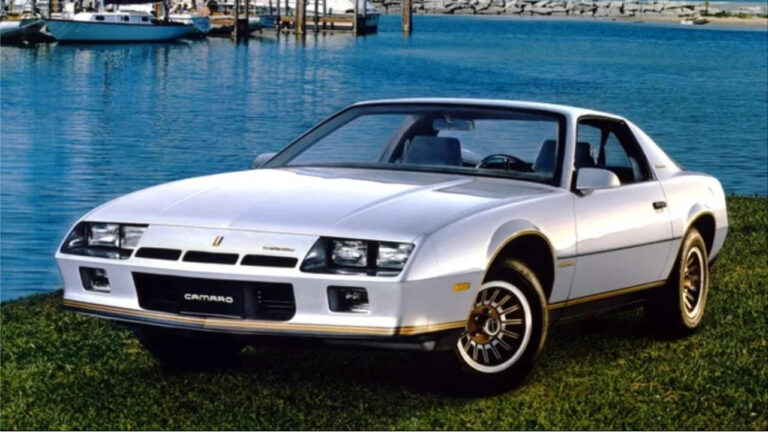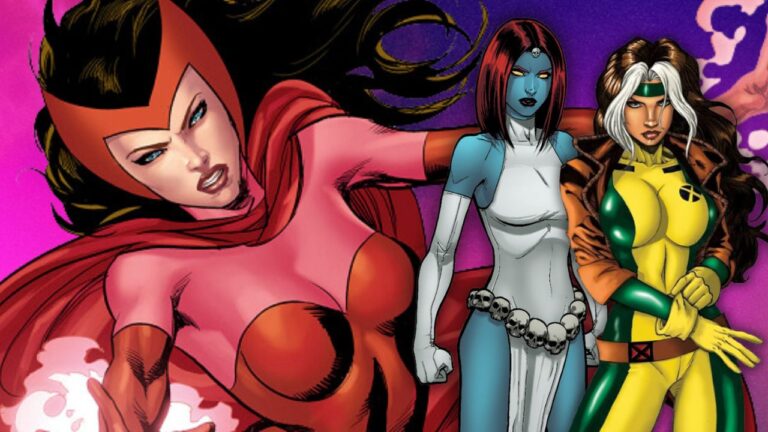13 Top Muscle Cars of the ’60s and ’70s

The muscle car’s golden era began in the mid-’60s and lasted about a decade before the oil crisis and more stringent emissions standards ruined performance cars.
During the muscle car heydays, seemingly every American carmaker produced a selection of highly desirable models, and picking just a few is no easy task.
Our list includes muscle and pony cars, but we’ve excluded American sports cars like the Chevrolet Corvette and Shelby Cobra.
1964 Pontiac GTO

Pontiac didn’t invent the muscle car, but the 1964 GTO was undoubtedly one of the models that started the muscle car craze. It had a stylish design and a powerful engine, so we’re not surprised that it set the standard for a whole generation of muscle cars.
Under the hood, the GTO had a 389 cu-in V8 engine producing 325 wild stallions. When equipped with the “Tri-Power” option, which included three two-barrel Rochester 2G carburetors, power was bumped up to 350-hp.
1968 Dodge Charger R/T

Dodge introduced the Charger in 1966, but it wasn’t exactly what we’d call a success. After a thorough redesign, they returned with the all-new second-gen Charger in 1968, and even Dodge didn’t expect to sell nearly 100,000 units in its first year.
Built on the Chrysler B platform, the Charger saw some cosmetic changes during its production run, but it was always available with excellent engines. The 440 Magnum V8 produced a very respectable 375-hp, but the star was the legendary 426 Hemi, which had 425 thoroughbred American stallions.
1968 Plymouth Road Runner

We’re not sure how or why someone at Plymouth decided to blend cartoons and muscle cars, but it worked surprisingly well. In 1968, Plymouth reached out to Warner Bros. and negotiated a licensing deal that let them use the famous Road Runner cartoon character for one of the brand’s muscle cars.
Plymouth built the Road Runner on the Chrysler B-platform, and it was available with a range of V8 engines, including the 426 Hemi. What’s not to love about a muscle car with 425-hp, bold styling, and a horn that made a “meep meep” sound?
1968 Oldsmobile 4-4-2

Oldsmobile introduced the 4-4-2 muscle car in 1964 as an option package for the F-85 and Cutlass models. It wasn’t until 1968 that the 4-4-2 became a standalone model.
Oldsmobile used a rather weird naming technique when coming up with the 4-4-2’s name. It’s derived from its 4-barrel carburetor, 4-speed transmission, and 2 exhausts. W-30-equipped Oldsmobile 4-4-2s with the 400 cu-in V8 engine produced a very respectable 360-hp, but those who wanted even more could opt for the Hurst/Olds, which had a 455 engine with 390 horses.
1969 Ford Mustang Boss 429

Some might argue that the Mustang was a pony car, not a muscle car. Well, with a massive 429 under its hood, it was packing more muscle than most other cars at the time. Ford introduced the Mustang Boss 429 in 1969 as a NASCAR homologation special, and only 859 were made. Restored examples can fetch half a million dollars at auctions today.
The 429 V8 produced a whopping 375-hp, making it Ford’s most potent engine at the time. It was a massive unit, and Ford had to revise the Mustang’s front end to shoehorn it into place.
1969 Dodge Charger Daytona / 1970 Plymouth Superbird

You must squint hard to see any resemblance between modern NASCAR racers and the actual road cars they’re supposed to look like. That wasn’t always the case, though, as it used to be possible to stroll into a dealership and purchase a virtually identical model.
By the late ’60s, NASCAR rules required manufacturers to homologate race cars, and Dodge had to build 500 Charger Daytonas in 1969. It had a massive wing at the rear and a sharp nose cone at the front, and was the first NASCAR racer to break the 200 mph barrier. The following year, Plymouth copied the formula with its Superbird, and after the two Winged Warriors dominated the 1970 season, NASCAR banned aero cars in 1971.
1969 Pontiac GTO Judge

Following the original GTO, Pontiac had to create something exceptional to keep customers interested, so in 1969, they offered the Judge package (among other customization options).
There certainly wasn’t a shortage of excellent muscle cars at this point, but the ‘69 Pontiac GTO Judge Ram Air IV was one of the meanest of them all. It had a high-performance 400 cu-in V8 engine that was conservatively rated at 370-hp and 445 lb-ft of torque. That kind of power meant it would sprint to 60 mph in 4.9 seconds, had a 122 mph top speed, and could do 13.6-second quarter-mile runs.
1970 Chevrolet Chevelle SS 454

In 1970, Chevrolet released a Chevelle SS that would become the most desirable of all the Chevelles. Even the “regular” Chevelle SS 454 had a 360-hp V8, so it was certainly no slouch, but that was nothing compared to the beastly 454 LS6.
With 450 stampeding horses being sent to the rear wheels, the ‘70 Chevelle SS 454 LS6 was one of the most powerful muscle cars money could buy.
1970 Dodge Challenger R/T

It took Dodge a few years to come up with an answer to the Ford Mustang and Chevy Camaro, but once the Challenger arrived in 1970, it was game on.
Dodge offered the 1970 Challenger with plenty of trims and options, and those who wanted the Road & Track, or R/T trim, could order it with the 383, 440 Magnum, 440 Sixpack, and 426 Hemi engines. For true purveyors of speed, only the 426 Hemi with its 425 horses and 490 lb-ft of torque would do. At the time, it was one of the fastest cars money could buy, capable of 4.7-second 0 to 60 sprints, a 134 mph top speed, and it could run a quarter-mile in 13.3 seconds.
1970 Buick GSX Stage 1

Those who added the optional GSX Stage 1 package to their 1970 Buick GS 455 became proud owners of one of this era’s most well-specced muscle cars. It included an appearance, performance, and handling package, and while other muscle cars could be ordered with basic options, the GSX had them all.
Literally every available factory performance and handling part was included. The Stage 1’s 455 V8 produced a respectable 360 horsepower and 510 lb-ft of torque. It could accelerate from 0 to 60 mph in 5.1 seconds, had a 135 mph top speed, and ran a quarter-mile in 14.3 seconds.
1970 AMC Rebel “The Machine”

In some ways, AMC was one of the coolest carmakers of the ‘60s and ‘70s. They dared to be different and put up a decent fight against the Big Three in Detroit. The AMC Rebel arrived in 1967 and was definitely one of the brand’s greatest hits.
It started out as the Rambler Rebel, but by 1968, it was known only as the Rebel. In 1970, the Rebel’s last production year, AMC released “The Machine,” the baddest of all the Rebels — especially with the eye-catching white, red, and blue color scheme. It wasn’t just good-looking, thanks to the 340-hp 390 cu-in V8, it packed a punch as well.
1973 Pontiac Firebird Trans Am SD-455

By 1973, the muscle car segment was a mere shadow of its former self. Pontiac wasn’t quite ready to give up yet, though. Firebird sales were nowhere near what they used to be, and GM execs considered axing it, but instead, someone convinced them to give the Trans Am the power it deserved.
With the SD-455 engine under its hood, the 1973 Pontiac Firebird Trans Am became the most powerful car in the States. This lightning-quick pony car could even keep up with the legendary Corvette. As it turned out, its 455 cu-in was no run-of-the-mill production engine; it was a race-derived unit jam-packed with high-performance parts.
1977 Pontiac Firebird Trans Am SE

We completely agree that the 1977 Pontiac Firebird Trans Am is nowhere near as good as most, if not all, the models on this list. However, it was a huge success, largely thanks to the hit movie Smokey And The Bandit, in which Burt Reynolds drives the wheels off a black Trans Am with gold details.
Under the hood, the Pontiac Trans Am came with an L78 400 as standard, but buyers could also have it with the W72 400 or the Oldsmobile-sourced L80 403. The W72 400 was the one enthusiasts wanted, as this 6.6-liter unit was given some performance upgrades to push power beyond the 200-hp mark. Today, it’s probably a prime candidate for an LS swap.





